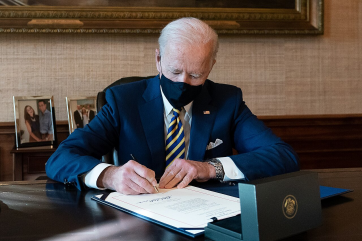Scientists Discover New Frog Species in NYC, Honor Amphibian Expert Who Noticed It First
By Russell WesterholmA researcher at Rutgers University teamed up with a group of co-authors to publish as study on a new species of frog found New York City, of all places.
Jeremy Feinberg, a doctoral candidate in Rutgers' School of Environmental and Biological Sciences, told NJ.com the discovery "was really an accident." He said he was researching a certain species that disappeared from Long Island when he found the new one some 80 miles east on Staten Island.
Feinberg and his associates published their paper on the Atlantic Coast leopard frog in the journal PLOS One. On of the study's co-authors noticed there was something distinct about this frog.
"The discovery of a new frog species from the urban Northeast is truly remarkable," Feinberg told NJ.com. "Frogs have a very particular type of call that doesn't really vary within the species. If you're in Florida, California, New Jersey - if it's the same species, you'll hear that call.
"Pretty much within 10 seconds of hearing the calling (on Staten Island), we said, 'Something is really weird here.'"
The researchers named the frog Rana kauffeldi, in honor of Carl Kauffeld, a former director of the Staten Island Zoo who was seen as an amphibian expert. Kauffeld initially discovered the frog with a paper in 1937, but Feinberg said he wanted to set the record straight.
"Even though he was clearly on to something, the claim Carl Kauffeld made in his 1937 paper fell short," he said in a press release. "We had the benefits of genetic testing and bioacoustic analysis that simply weren't available to Kauffeld to prove that even though this frog might look like the two other leopard frogs in the area, it was actually a third and completely separate species."
The Atlantic Coast leopard frog is known to live in wetlands anywhere from Conn. to N.C. The authors of the new paper wanted to honor Kauffeld with the frog's scientific name since his original work never gained traction.
"After some discussion, we agreed that it just seemed right to name the species after Carl Kauffeld," Feinberg said. "We wanted to acknowledge his work and give credit where we believe it was due even though it was nearly 80 years after the fact."








